The Cushitic branch and the major components of the Afro-Asiatic family, Oromo, is by far the largest ethnolinguistic ethnicity in Ethiopia. The region consists of more than one-third of the country’s population, which was originally confined to the southeast of the country. The region occupied all of the southern parts of Ethiopia after the migration of Oromo people in the 16th century. This had led to the settling around the Tana River in Kenya (source – britannical.com, last reviewed by Amy McKenna).
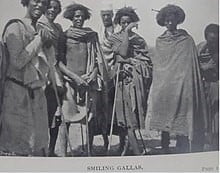
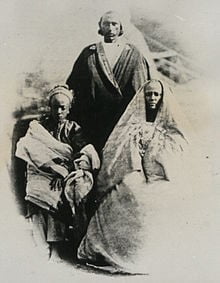
Many studies had suggested that the Oromo had been probably originated from the Lake Chew Bahir and Lake Chamo. This helped them to spread their cultural and social norms on the broader parts of the continent. The Adal war led the Oromo people to move to the northern parts of the country; thus, the mixed-up nation between the former and the recently moved Oromo people made it unclear to identify the clear cultural standards of the place.
They increased their numbers through Meedhicca, Mogasa, and Gudifacha, assimilation and forced assimilation of other ethnic groups, as well as the inclusion of mixed peoples (Gabbaro). (source – Wikipedia, Oromo people).
Oromo History
The Gamo Monk Abba Bahrey first wrote the first and foremost documentation and history of the Oromo people in 1593. Though the synonymous work had been mentioned much earlier, it had been discussed frequently in the records left by Abba Paulos, Jeronimo Lobo, Galawdewos, Sertse Dingel, and others. Many traces indicated that Oromo is a moral people who stayed united in good and bad days. Later they start to expand their herbs and continued to migrate looking for wider land. Everywhere they went they needed some rules to live on so they started picking out leaders and elders, thus they selected leaders called “Luba” which were based on the Gedaa system of the government.
By the late 16th century, two major Oromo confederations emerged: afre and sadaqua, which respectively refer to four and three in their language. Afre emerged from four older clans and sadaqa out of three.
The south-central part of Ethiopia is where the Oromo confederation is located, specifically the northwest of the borena zone near lake abaya. But started moving north around the 16th century in what is termed as the “great Oromo migration”.
The migration was brought by Adal war which killed a lot of people and depopulated the residents who were near their lands. It was probably also motivated by the drought which was initiated in the traditional homeland. The expansion had lasted till the 17th century. The region had been affected by both the peaceful and violent issues that had been going on with the other nations of the country, such as Amhara, Sidama, Afar, and Somali (source – Wikipedia, Oromo history).
Oromo Population
The widespread Oromo nation contributes about 55% of the population of Ethiopia. Because of their massive migration, they are found almost in all of the country’s regions. This makes the Oromo the most prominent race with over 35 million population numbers, based on the statistics conducted in 2018.
In the same case, Oromo is one of the leading races growing very fast based on former statistics with nearly 1.1% annual growth.
Research had shown out of the numerous sub-nations of the region “Seka Chekorsa” in Illubabbor is the highest populated wereda out of the rest; secondly, we will encounter the second most populated wereda which is “Kersa” also in Illubabur.
Oromo Map
Within nearly 352,690 square kilometers of land area, the region state expands from the western end of the country to the eastern parts from 34ºE latitude to 43ºE. Its south-north expanse runs from 42/3º north to 102/3º north latitude. Oromia is a diversified homeland because of the Great Rift Valley the land had been divided into two parts which make up the western third and the eastern two-thirds. This had made the region to be sharp at the mid portions of the land.
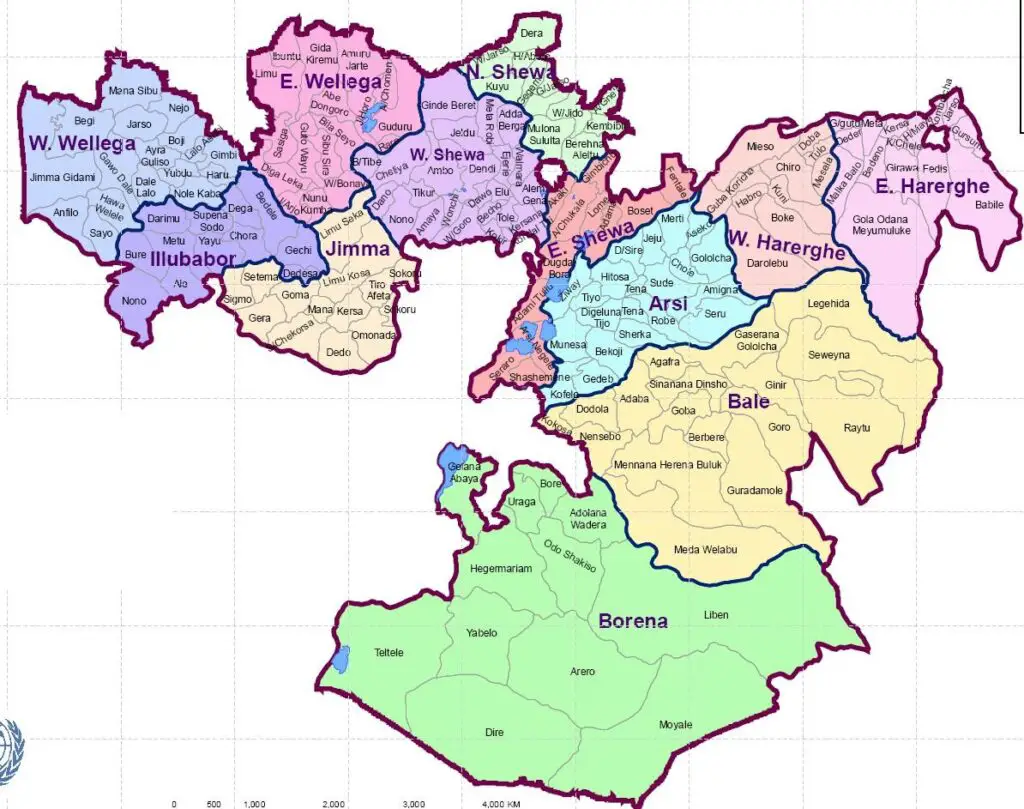
Oromia consists of both the high and the low lands on earth with nearly 500m above sea level low points to 4607m above sea level high points. This contributes a very diversified land structure will high mountains, undulating plateaus, panoramic gorges, and deep valleys. Similar to the diversified structures of the landscape Oromia is also the place of favorable climatic conditions and rich natural resources.
The climatic types prevailing in the region may be grouped into three major categories.
- Dry climates,
- Tropical rainy climates and
- Rainy climates.
The dry climate is characterized by poor sparse vegetation with an annual mean temperature of 27ºC-39ºC. The semi-dry area of the region encounters an annual mean temperature between 18ºC-27ºC. Lastly, the rainy portion of the region has an annual temperature of less than 18ºC. (Source: Ethiopia demographic and health survey 2005 central statistical agency, Addis Ababa, Ethiopia, RC macro, Calverton, Maryland, USA, September 2006).
Oromo Flag
Traditional Gada Flag
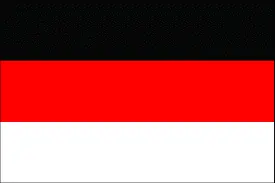
The Oromo Gada flag consists of black, red, and white all laid horizontally from top to bottom. Each color has its own meaning.
- The black color represents those yet enters very active life, the part of human life is taken as unknown (black).
- The red show those who are also active in a different organization, it’s the age that used as a light for the people.
- Finally the white indicates those who passed through an active life in the society. They described the illustration for those who aren’t any longer considered as a sacrifice as the age of retirement.
Oromo Regional State Flag
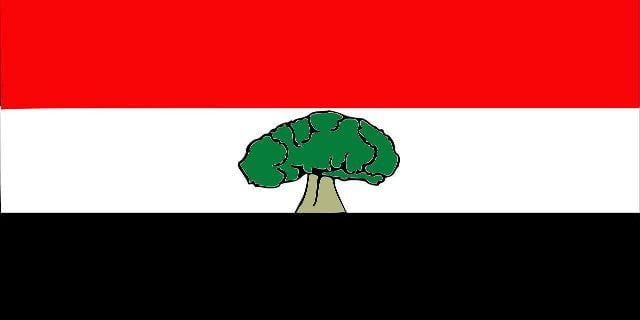
The Oromo regional state flag represents the colors that have a profound meaning in the Oromo nation red, white, and black with different patterns. In addition to the Geda colors, the flag uses the sycamore tree at the center of the flag.
OPDO (Oromo People’s Democratic Organization) Flag
The OPDO is one of the ruling parties from the EPRDF (Ethiopian people’s revolutionary democratic front coalition). The flag was first founded in 1989. It is horizontally divided with red over yellow and a green triangle inserted alongside from the left. It also has a green traditional sycamore tree right in the middle.
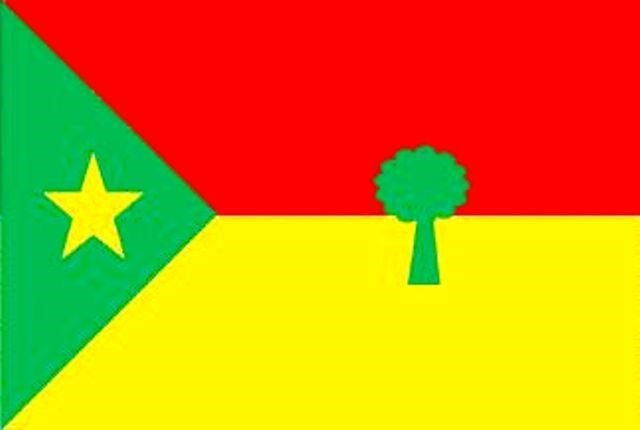
Now after its name changed to the Oromo democratic party (ODP), they use Gada flag as a party flag.
Oromo Liberation Front (OLF) Flag
OLF serves the Oromo community by seeking the equality of the nation as any other nation in the country. The party was formed in 1973 they are considered as the armed movement fighters for the liberation of the Oromo nation. The Oromo liberation flag consists of the three horizontal stripes of red, green, and red and the center of the flag has a yellow sharped edge disc with a sycamore tree at the middle and a red star above the sycamore tree.
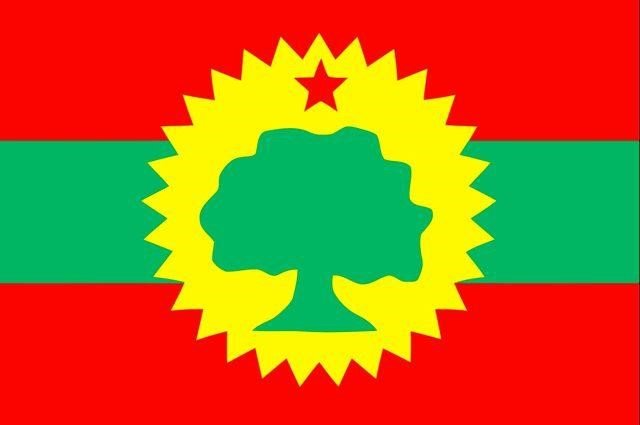
Read more on Oromo Flags here.
Oromo State Anthem Lyrics (In English)
Oromia, Oromia, mother of great history
Hilum of Oromos, hub of Gada system
Earth of law and norm, mother of oda congress
Prosperous, fertile, and can grow all.
We washed dirt of 100 years with blood.
Raised your flag with priceless sacrifice.
We are happy, so should you be; our self-governance is back.
For peace, and democracy, respect for humanity
For credible development and quick growth
love and unity with other nations
For life guarantee, we have set a firm goal
We have brought our forearms.
Oromia; prosper, develop, and prevail!
Related Article
Oromo Language (Oromiffa or Afaan Oromo)
From the Cushitic branch of the Afro-Asiatic language family, Oromo is the fourth most virally speakers language following Arabic, Hausa, and Swahili. Making more than 33.8% of the entire country’s population and over 36 million speakers they have the largest number of speakers next to Amharic. The language also serves as the first language for the northern and eastern parts of Kenya will about half a million speakers, a few amount of emigrants use the language in foreign countries such as South Africa, Libya, Egypt, and Sudan.
Domestically Oromo language serves as one of the official languages for the country and is considered as the working language for several regional states such as Oromia, Harar, and Dire Dawa, and the primary educational language for Harari, Dire Dawa, Benshagul Gumez, and Addis Ababa.
In addition, it is used as an internet language for the federal websites along with Tigrinya. When it comes to the literature development of the language Oromiffa had developed its writing instrument with the help of interpretation and translation, the most known “onesimos nesib’s” and aster “ganno’s” translation of the bible in the 19th century are one of the milestones to ever be reached by the Oromo language.
Later some time the government itself provided a literacy revolution by allowing several languages including Oromo to participate in several radio broadcasting and publishing tasks. As time passed Oromifa dictionary was developed by “Jimma Time’s Oromiffa Group” (JTOG) in corporation with selamsoft (Wikipedia, Oromo language).
Related topics
Tourist Attractions (Places You Should Visit)
From the topographic structure of the region to the weather, the people, the food, and the culture Oromia is a wonderful Ethiopia land.
Out of the numerous places you should visit in Ethiopia, Oromia, Aba Jifar palace is by far the first must-be-seen place. This palace is the oldest and largest traditional wooden architectural vision in Jimma.
Out of the infinite places which must be seen in Oromia here are the very bests.
- The bale mountains (in Goba),
- Dalal (in Borena),
- Harar Jegol wall,
- Lake Ziway (in Zeway),
- Wenchi Crater Lake (in West Shewa),
- Harar Museum (in East Hararghe),
- Debre Libanos (in North Shewa), and many more.
Oromia is also the owner of many beautiful rituals and in such times you will be able to see and observe much traditional clothing which is hand-woven and tastes extremely delicious foods and drinks. The region has a profound social, religious, political, economic, and institutional contribution to the rest of the Ethiopian people and Africa.
Oromo Culture and Traditions
Oromo Religion
Many traces had led that the Oromo religion was neither Christianity nor Islam but a unique religion called “waaqeffanna”. Even though the name seems different and goddesses the waaqeffanna is entitled to one god, thus the word waaqeffanna is derived from the word waaqa, which is an ancient name for the creator in the Cushitic language at the same time the followers of the religion are called waaqeffataa and they believe in the mighty one god. Although currently, the majority of the Oromo nation had diverged into Christianity and Islam, the waaqeffanna religion followers still cover about 3% of the Oromo nation, which is 1,095,000 Oromos, in present-day Ethiopia.
Irreechaa (Irrecha)

It is a thanksgiving ritual by the nations of Oromo and others who love to participate, during the festival many main clans and sub-clans of Oromo will gather around and acknowledge the god for all the peace, love, and unity. it’s an optimistic celebration celebrated by the nations of Oromo and tourists to radiate goodness and love. In short, the Oromo people celebrate irrecha to thank waaqa (god) for the blessing and mercies they have received throughout the previous year (http://en.m.wikipidia.org). The celebration itself commemorates the arrival of Birra (the name for spring in the region) the blessings enjoyed by people over the past year. Traditional clothing, dancing, and singing will be observed during the occasion.
Gadaa (Gada) System
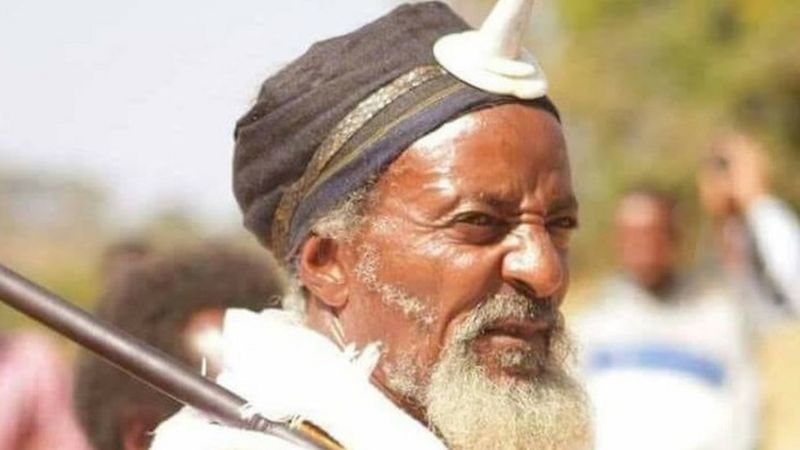
Gada is the spotlight of the Oromo nation it practices the democratic system of governance ever since the early ages. The tradition had made a certain impact in other places as well such as Kenya, Konso, and Gedeo. The Gada is based on an eight-year increment and is comprised of eleven age groups. Based on the stage of each authority each male Oromo participants gain a socio-political privilege accordingly. Five successive Gada states make a generation. This process is assembled to military, economic, political, and ritual responsibilities to the individuals who are entitled to the system. And the power will remain in hand until the next formal power transfer ritual. The Gada system has been inscribed by UNESCO as intangible cultural heritage since 2016.
Oromo Food in Different Subcultures
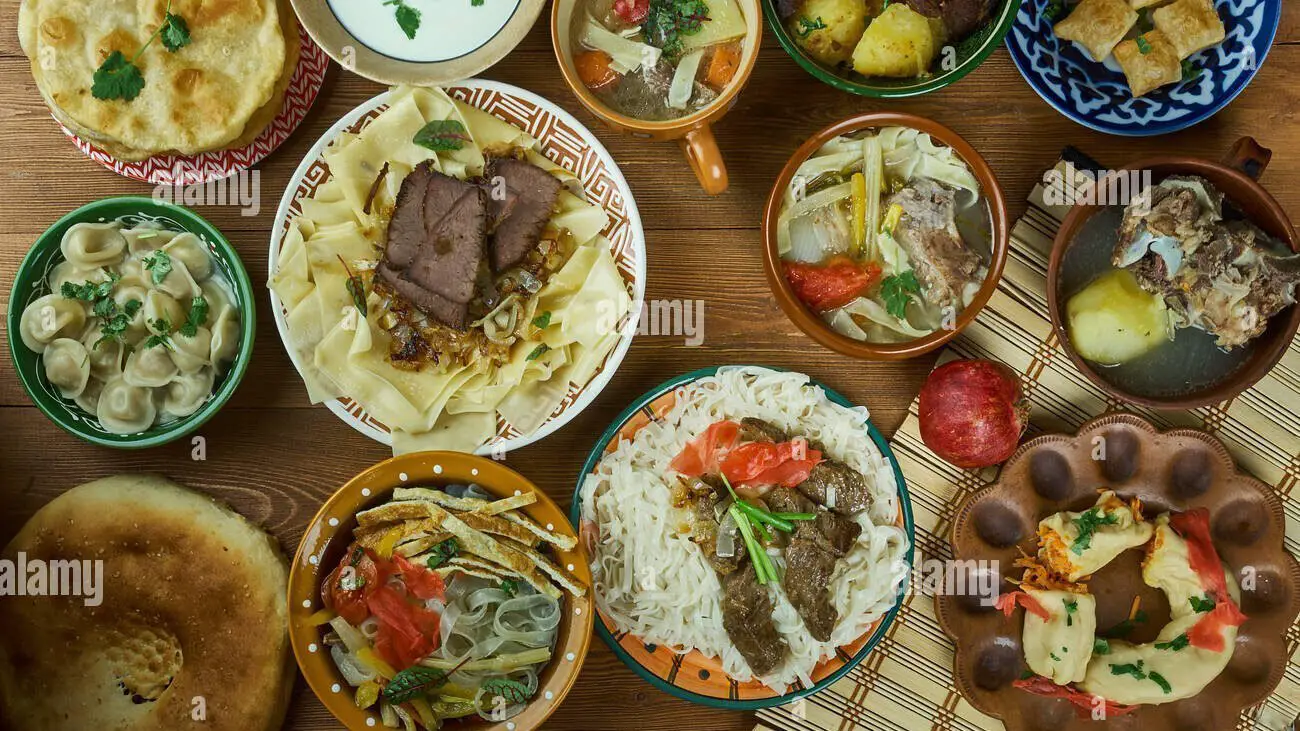
Oromo is well known for the highest amount of consumption for butter and milk, thus it’s no wonder they are a must be constituents of the traditional dishes such as “chiko” barley conserved with butter, the dish is traditionally made by women using a distilled butter, ginger, onion, salt, spice, and barley powder.
The dish-making process is pretty focused and needs a lot of wisdom thus you might not find a lot of traditional places in the city but if you do feel free to check them out. The traditional dishes aren’t just about food and drinks but also about the spiritual enjoyment and pleasure that had been given by god. Similarly some dishes are only made for certain rituals, ceremonial events, weddings, and other special occasions.
Because of the high amount of supply and the long term tradition, Oromo serves milk to guests’, like tea and water in other western nations. Some of the reasons for Oromo food’s absence in the city are the lack of ingredients and the health consciousness which are cautious.
Oromia is also home to coffee beans (the second most traded commodity on the world market), teff, and about five different varieties of barley are also found in the region.
Oromo Traditional Dress
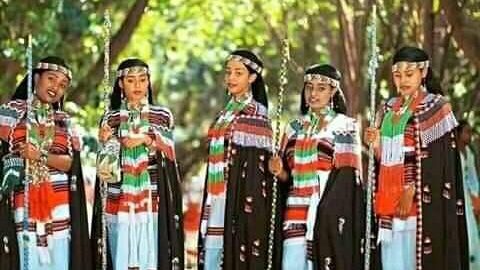
The traditional Oromo clothing tends to be more colorful and designed with a wondrous playing line on the fabric. The traditional clothing consists woya for man which sort of look like robes and wandabo for women, the women also wears qollo and sadetta which are cotton hand spun and handwoven, even further the Oromo is also familiar with wearing leather (animal skin robes).
Based on the research conducted by many individuals there are about 30 most worn costumes in the Oromo tradition. The original clothing of the Oromo culture had been modernized and updated by many potential and passionate designers. These helped the Oromo culture especially its clothing to reach the worldwide market to promote the beautiful and astonishing identity.
Besides the ingenious complications which are shown in the fabrics of the Oromo clothing, they are also able to include and merge the political, social, and ideological representations of their nation. The red, black, and white are immediately recognizable as the Oromo Gada flag. Not to mention this had created a tremendous amount of interest and passion in the clothing and the entire culture of the nation.
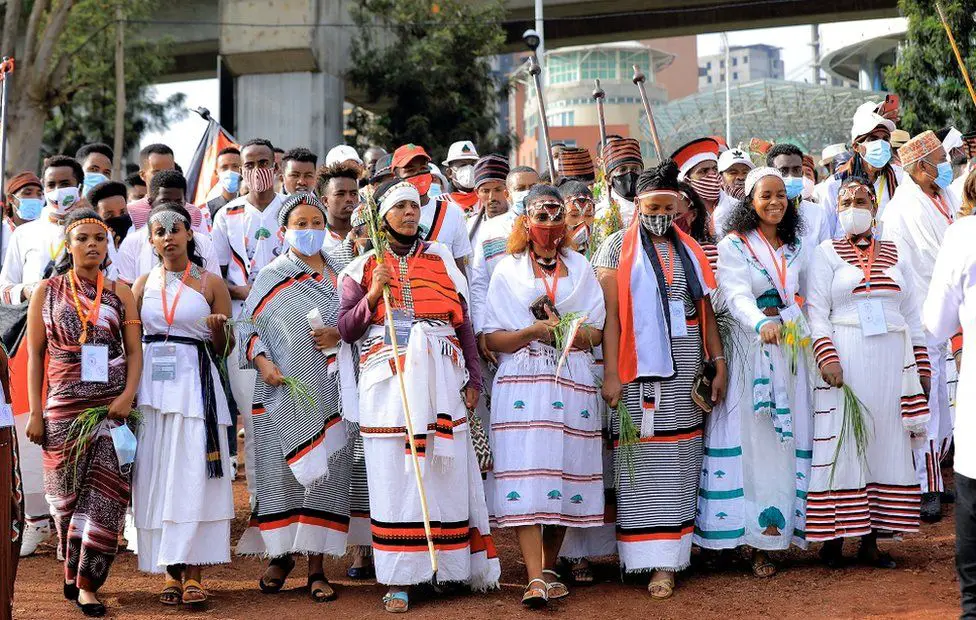
People are now more proud and aware of their culture and the hard work that had been forwarded to them by their ancestors. Thanks to the young and energetic designers, photographers, and promoters the Oromo culture is now building a brighter and more promising future.
it’s a well-known fact that as the entire regions of Ethiopia Oromo consumes a highly precious natural, cultural and social wealth. Thus government should give more attention to promoting this beautiful and aspiring culture to the whole world. Oromo is one of the prides of Ethiopia and Africa. With your hard work and dedication, the motherland can get the deserving attention from the world come to see the wonder of this marvelous land.
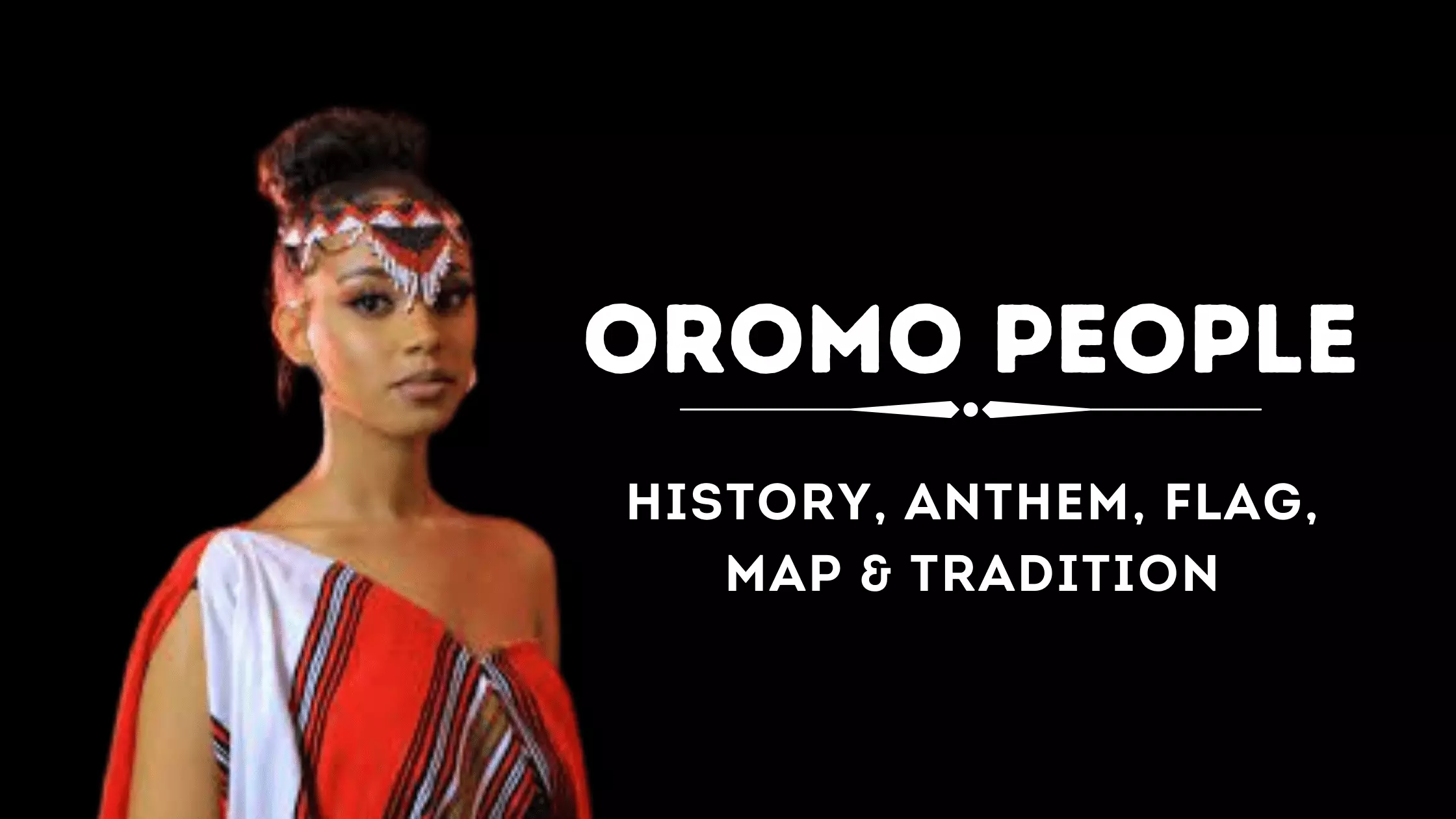
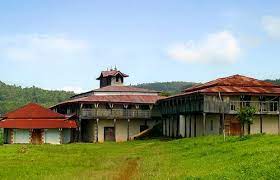
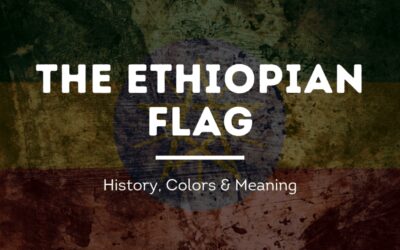
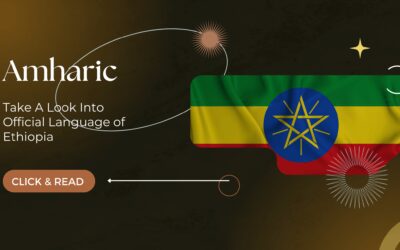
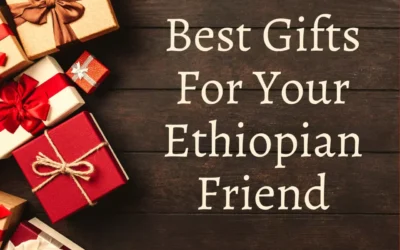
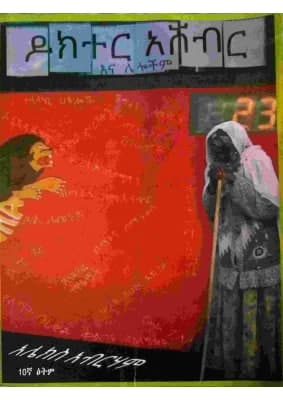
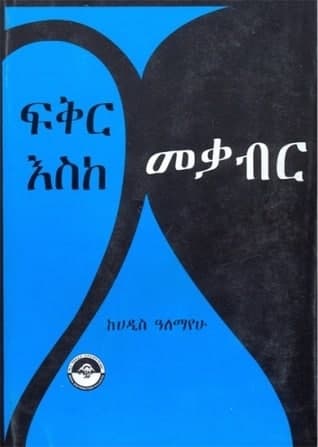
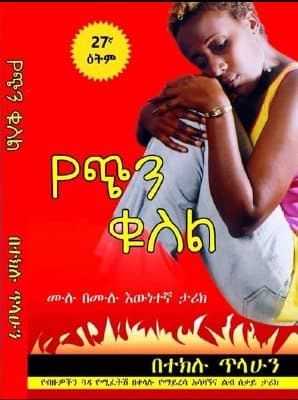
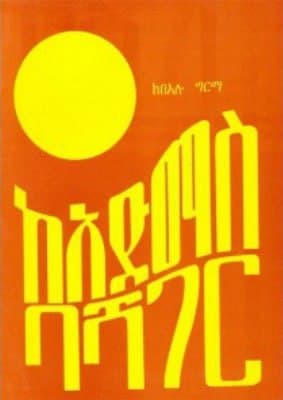
0 Comments